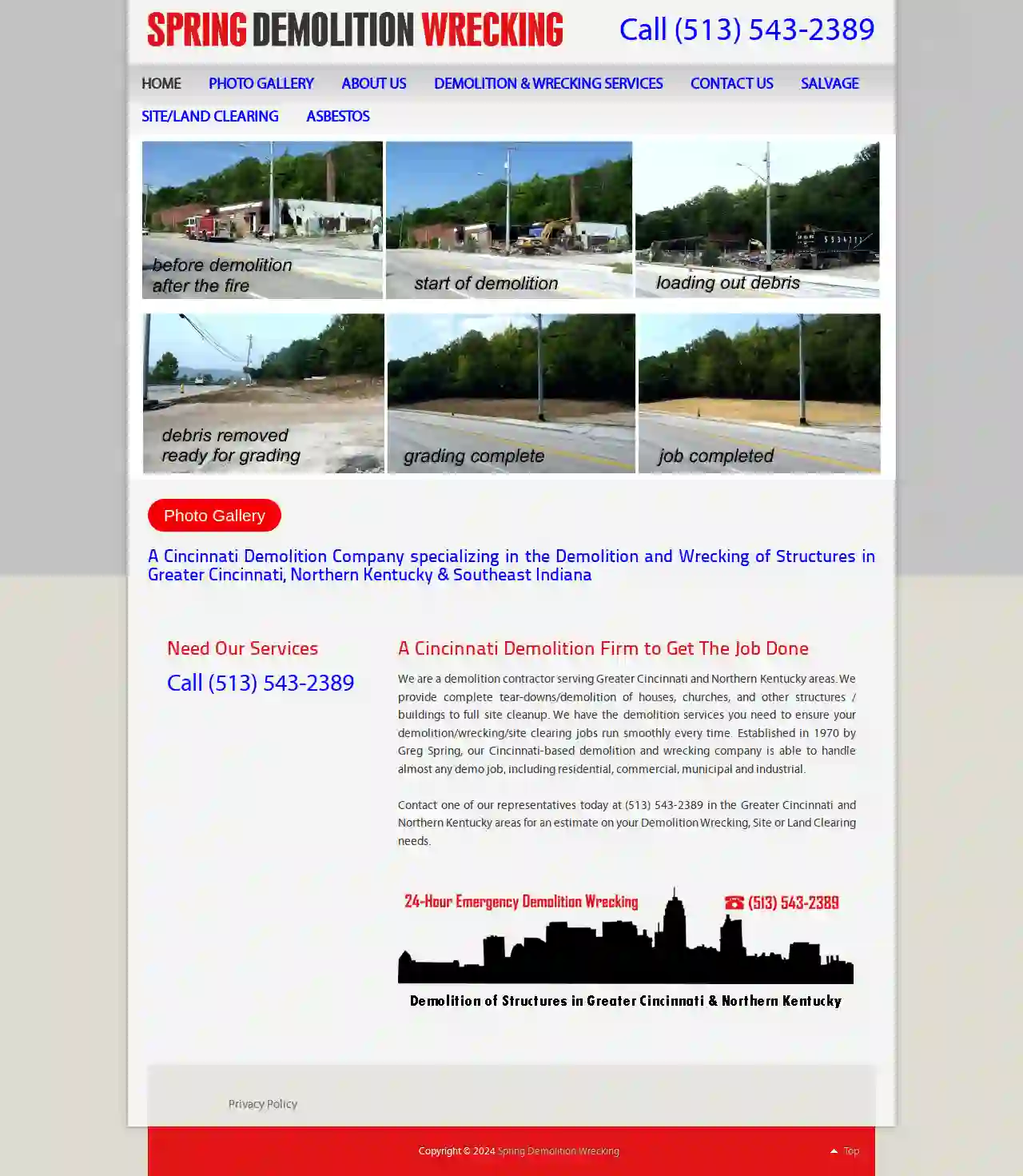Asbestos Removal Cincinnati
Find top Asbestos Removal in Cincinnati
Receive 3 FREE Asbestos Abatement quotes for your project today! Compare profiles, reviews, accreditations, portfolio, etc... and choose the best deal.

Spring Demolition Wrecking
53 reviewsCincinnati, USA Cincinnati Demolition Company specializing in the Demolition and Wrecking of Structures in Greater Cincinnati, Northern Kentucky & Southeast Indiana A Cincinnati Demolition Firm to Get The Job Done We are a demolition contractor serving Greater Cincinnati and Northern Kentucky areas. We provide complete tear-downs/demolition of houses, churches, and other structures / buildings to full site cleanup. We have the demolition services you need to ensure your demolition/wrecking/site clearing jobs run smoothly every time. Established in 1970 by Greg Spring, our Cincinnati-based demolition and wrecking company is able to handle almost any demo job, including residential, commercial, municipal and industrial. Contact one of our representatives today at (513) 543-2389 in the Greater Cincinnati and Northern Kentucky areas for an estimate on your Demolition Wrecking, Site or Land Clearing needs.
- Services
- Why Us?
- Gallery
Get Quote
Ohio Dismantle
34 reviews1000 W. Broad St., Columbus, 43229, USOhio Dismantle is a full-service demolition company serving the greater Columbus, Ohio area. We specialize in safe and efficient demolition of residential, commercial, and industrial structures. Our team of experienced professionals is dedicated to providing our clients with the highest quality service at competitive prices. We are fully licensed and insured, and we take pride in our commitment to safety and environmental responsibility. At Ohio Dismantle, we understand that demolition can be a complex and challenging process. That's why we work closely with our clients to develop a customized demolition plan that meets their specific needs and budget. We also offer a variety of other services, such as site cleanup, debris removal, and asbestos abatement. Contact us today for a free estimate.
- Services
- Why Us?
Get Quote
Over 1,968+ Demolition Contractors onboarded
Our demolition contractors operate in Cincinnati & surrounding areas!
DemolitionMatch has curated and vetted Top Demolition Companies near Cincinnati. Find a top & reliable contractor today.
Frequently Asked Questions About Asbestos Removal
- Chrysotile (white asbestos):
- Amosite (brown asbestos):
- Crocidolite (blue asbestos):
- Anthophyllite:
- Tremolite:
- Actinolite:
- Licensing and certification of asbestos abatement professionals.
- Permits for asbestos removal work.
- Specific procedures for handling, transporting, and disposing of asbestos waste.
- Air monitoring and clearance testing after abatement.
- Notification requirements for neighbors and local authorities.
Can I remove asbestos myself?
What are the different types of asbestos?
What are the regulations for asbestos removal in USA?
What is non-friable asbestos?
Can I remove asbestos myself?
What are the different types of asbestos?
- Chrysotile (white asbestos):
- Amosite (brown asbestos):
- Crocidolite (blue asbestos):
- Anthophyllite:
- Tremolite:
- Actinolite:
What are the regulations for asbestos removal in USA?
- Licensing and certification of asbestos abatement professionals.
- Permits for asbestos removal work.
- Specific procedures for handling, transporting, and disposing of asbestos waste.
- Air monitoring and clearance testing after abatement.
- Notification requirements for neighbors and local authorities.